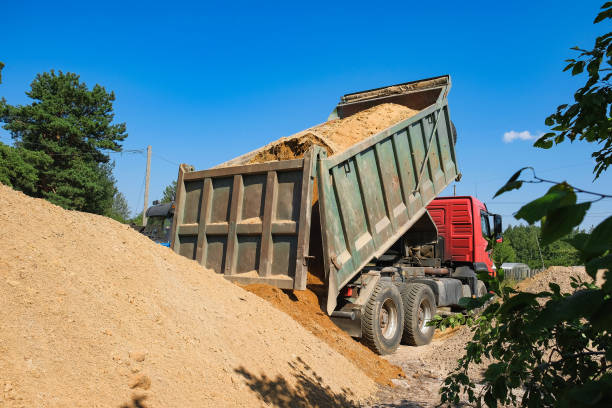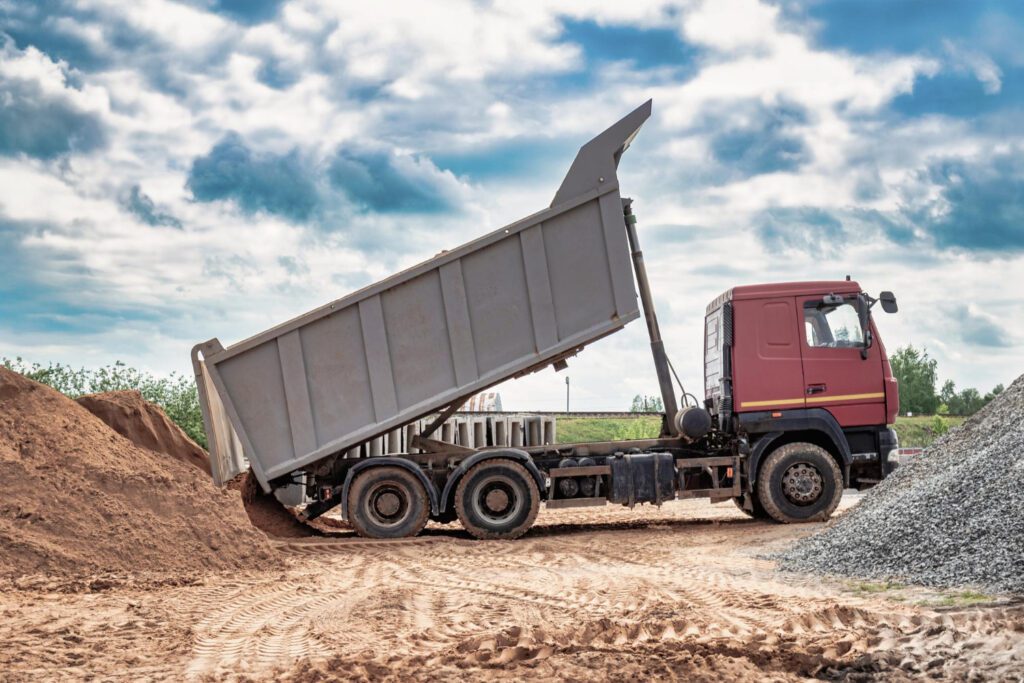Dump trucks are the workhorses of many industries, hauling heavy loads daily. But they come with a big risk—tipping over. That’s where automatic lowering systems step in. Automatic lowering systems are designed to tackle this problem by providing a safer, more stable unloading process.
In the following sections, we will dive deeper into the mechanics of automatic lowering systems, explore their key components, and discuss the many benefits they offer for dump truck operations. We will also cover best practices for integrating these systems into your fleet to maximize safety and performance.
Understanding the Mechanics of Automatic Lowering Systems
Automatic lowering systems are built to stop dump trucks from tipping over, especially during unloading. These systems work by using sensors and control units to monitor the truck’s stability in real time. If the system detects that the truck is becoming unstable, it automatically lowers the dump bed to bring the center of gravity back down.
The process starts with sensors placed at strategic points on the truck. These sensors continuously measure factors like tilt angle and load distribution. When the sensors detect a critical tilt angle or an uneven load, they send a signal to the control unit. This control unit is the brain of the system, processing data and deciding when to activate the lowering mechanism.
The lowering mechanism itself usually consists of hydraulic or pneumatic actuators. When the control unit receives the signal, it activates these actuators, which then lower the dump bed. This rapid response can prevent the truck from tipping over, even in challenging conditions like rough terrain or during sudden unloading.
Key Components of an Automatic Lowering System
An effective automatic lowering system relies on several key components, all working together to keep your dump truck stable. Here is a breakdown of the primary components:
1. Sensors: These are the eyes of the system, providing real-time data about the truck’s tilt and load distribution. Common types include tilt sensors and load cells.
2. Control Unit: This is the brain of the system. It processes the data from the sensors, making decisions on when to activate the lowering mechanism. The control unit ensures that the system responds quickly and accurately.
3. Actuators: These are hydraulic or pneumatic devices that physically lower the dump bed. They receive signals from the control unit and take action to stabilize the truck.
4. Wiring and Connections: Reliable wiring and connections are essential for seamless communication between the sensors, control unit, and actuators. Any failure in this part can disrupt the entire system.
5. Power Supply: A stable power supply ensures that all components of the system function correctly. Whether battery-operated or connected to the truck’s electrical system, consistent power is crucial.
Each of these components must work together flawlessly for the system to be effective. Sensors provide the necessary data, the control unit processes it, and the actuators take action. This coordination is what makes automatic lowering systems a reliable solution for enhancing dump truck safety.
Advantages of Automatic Lowering Systems for Dump Truck Operations
Automatic lowering systems offer big advantages for your fleet, including improved safety and fewer accidents. One of the main advantages is enhanced safety. By automatically lowering the dump bed when instability is detected, these systems help prevent accidents that can cause injury or damage. This automated safety feature provides peace of mind for both drivers and fleet managers.
Another major benefit is increased operational efficiency. With automatic lowering systems, the risk of tipping is significantly reduced, which means fewer interruptions to daily operations. This can save a lot of time and money in the long run. Trucks can complete their tasks without frequent stops for safety checks, making the entire process smoother.
These systems also extend the lifespan of the dump truck. By preventing tipping, they help avoid the wear and tear that comes with accidents. This means fewer repairs and less downtime, allowing for better fleet management. Automatic lowering systems contribute to the overall durability and reliability of the trucks, ensuring long-term benefits.
Best Practices for Integrating Automatic Lowering Systems into Your Fleet
Adding automatic lowering systems to your fleet is simple, but there are a few best practices to follow: First, it is essential to choose a system that is compatible with your existing dump trucks. Check the specifications to ensure the system can be easily fitted to your trucks without extensive modifications.
Training for drivers is crucial. Educate them on how the automatic lowering system works and what signals to look out for. Drivers should be comfortable with the technology and understand how to react when the system activates. Proper training ensures that everyone can operate safely and efficiently.
Regular maintenance is another best practice. Keeping the sensors, control unit, and actuators in good condition ensures the system works correctly. Schedule periodic inspections to check for any issues and make necessary repairs. This regular upkeep is key to maintaining the effectiveness of the automatic lowering system.
Finally, always monitor the system’s performance. Collect data on how often the system activates and under what conditions. This information can help refine operations and improve overall safety protocols. Consistent monitoring and adjustments will maximize the benefits of the automatic lowering system.
Conclusion
Automatic lowering systems are key to making your dump truck operations safer and more efficient. By preventing accidents and extending the life of your trucks, they’re a smart investment for any fleet. By understanding the mechanics and key components of these systems, you can appreciate the advantages they offer. These systems not only prevent accidents but also increase operational efficiency and extend the lifespan of the trucks.
If you are looking to upgrade your fleet with advanced
dump truck safety features, consider adding automatic lowering systems. To learn more about how these systems can benefit your operations, contact us at WINK Anti Tip today. Let’s make your fleet safer and more efficient together.




0 Comments